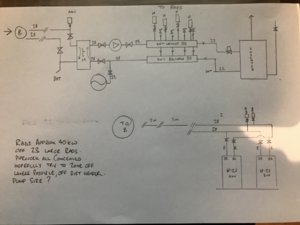PUMP SIZING.
2 boilers max 50kw
1 250l unvented
23-25 rads totalling around 40kw
Low loss header
Distribution header
This is what we are going with. We are hoping to try to zone off what we can onto separate rf stats linked to zone valves. But as all piping is concealed and under floors this may prove difficult.
I can’t calculate index circuit so what advice can be offered re pump sizing? It’s a 2 storey property with 2 rads in loft also. Pump to be sited ground floor. I’m guessing a single 15/60 won’t be upto it but didn’t want to over spec a pump.
thanks in advance for any advice
2 boilers max 50kw
1 250l unvented
23-25 rads totalling around 40kw
Low loss header
Distribution header
This is what we are going with. We are hoping to try to zone off what we can onto separate rf stats linked to zone valves. But as all piping is concealed and under floors this may prove difficult.
I can’t calculate index circuit so what advice can be offered re pump sizing? It’s a 2 storey property with 2 rads in loft also. Pump to be sited ground floor. I’m guessing a single 15/60 won’t be upto it but didn’t want to over spec a pump.
thanks in advance for any advice



